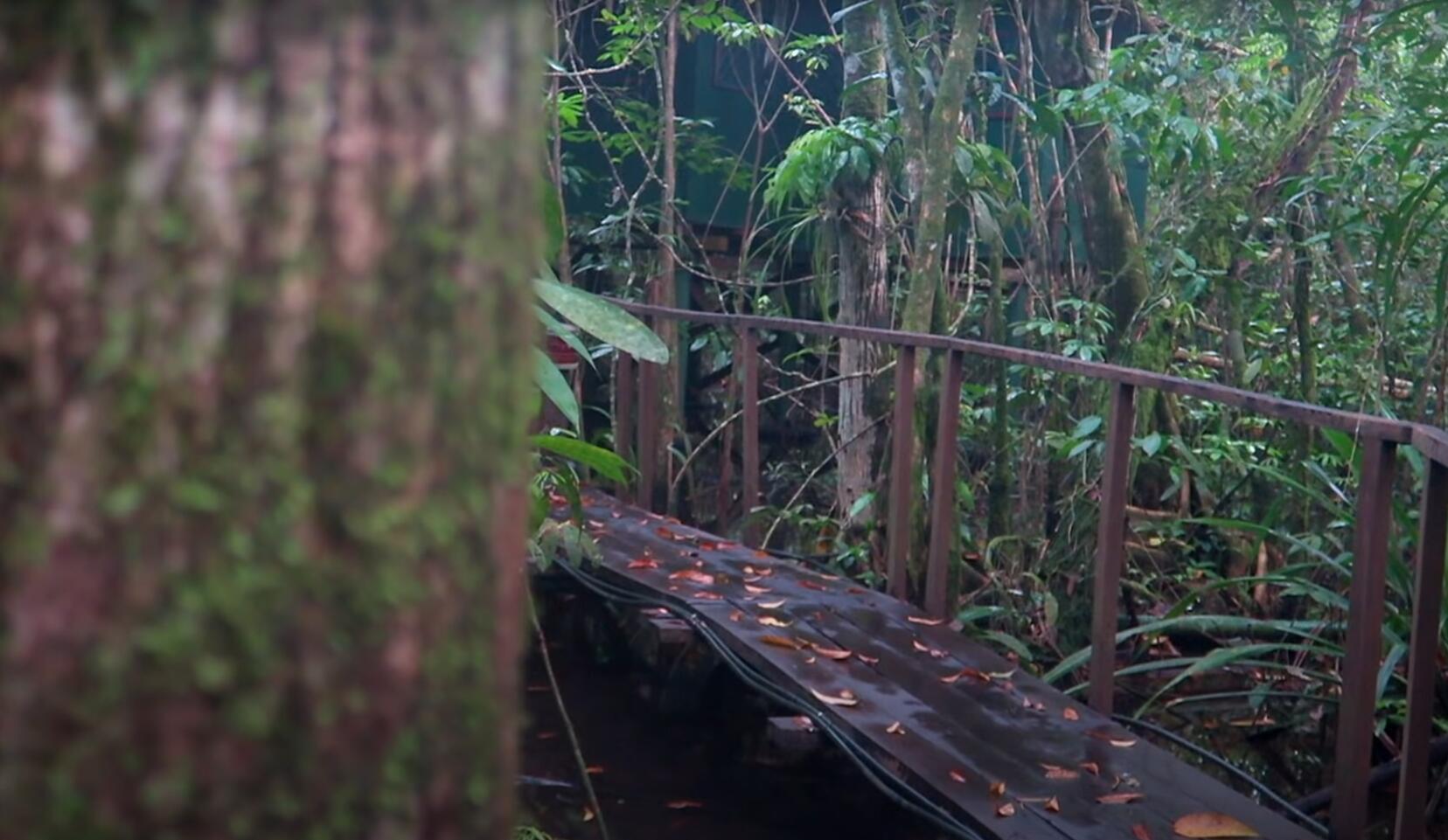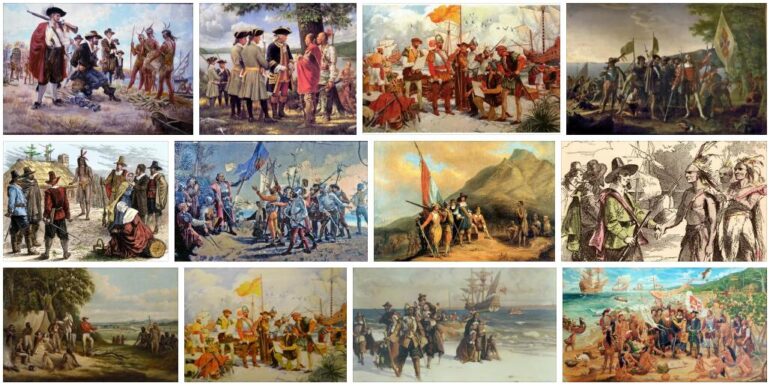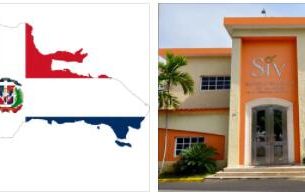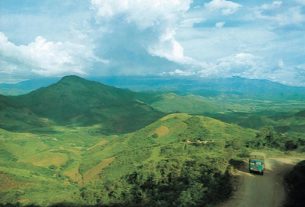America is a summary name for the land masses in the western hemisphere, between the Atlantic Ocean in the east and the Pacific Ocean in the west. The continent encompasses around 42 million square miles and is divided into two roughly the same continents, North America and South America, with Central America as a link. According to Countryaah.com, Central America consists of seven countries and most of them were formed by volcanic activity about 2.8 million years ago. Before that there was no connection between the South and the North.
There are various theories on when the continent was first populated. Most, on the other hand, state that the first people in America migrated from Siberia across the Bering Strait to Alaska during an ice age sometime between 40,000 and 17,000 years ago.
The first known European to the continent was Leiv Eiriksson around the year 1000. No special exploitation of the continent from the European side did not happen until Kristoffer Columbus rediscovered the continent in 1492.
The indigenous people were long called Indians (Spanish Indios) because Columbus mistakenly believed he had come to India when he arrived in the American continent. America is now generally perceived as two continents, North America and South America. In everyday speech, America is often used to denote the United States.
Name of America
The name America is supposed to be after the Italian explorer Amerigo Vespucci (1454-1512). However, there are several other theories about the origin of the name, including that it is after the Sierra Amerrique mountain range in present-day Nicaragua, and that Vespucci took its name from it. America was also called ” the new world ” by European colonists.
America (after Americus Vespucius or Amerigo Vespucci), the continent – or “double continent” – that encompasses the land masses of the Western Hemisphere between the Atlantic and Pacific Oceans.America also usually includes the large islands north of the continent, for example. Greenland. From Greenland’s northern tip to America’s southern tip – Cape Horn – the distance is 16,000 km. America covers an area of 42 million km 2 and in 2006 had 898 million inhabitants.
America is divided into two continents, North America and South America. The boundary between them goes across the Panamanian Sea. The narrow headland that makes up the area south of Mexico and north of the border with South America is called Central America and is often considered a special region, as is the island world northeast of it, the Caribbean. In some contexts, however, Central America is used as a summary term for Mexico, Central America and the Caribbean.
America is also usually divided into two cultural regions, Latin America and Anglo America. The former, which encompasses all of South America, North America south of the Rio Grande and most of the Caribbean, was colonized by Portuguese and Spaniards. Nowadays mainly Spanish and Portuguese are spoken in these areas. The United States and Canada in North America form Anglo America. English is the dominant language in these countries. In particular, archeology, anthropology and linguistics are occasionally spoken of in the Mesoamerican region, a cultural area that encompasses large parts of Mexico and neighboring areas of Central America and is primarily defined based on the situation prior to Columbus’s arrival.
The name America was first used by German geographer Martin Waldseemüller, who in his work “Cosmographiae introductio” (1507) named the area after the Italian explorer Amerigo Vespucci. – In daily speech, America is often used concurrently with ‘United States of America’, i.e. USA.
American Prehistory
American archaeological research has been based on different geographical and cultural regions. Within each region, cultural traditions are defined, each with a specific ecological adaptation, as well as technological and economic development. Cultural development can be divided into four stages: the paleoindian stage (50,000–8000 BC) with the first immigration via the Bering Strait and a period of specialized big game hunting; the archaic stage (8000–5000 BC) with nomadic hunters and collectors or simple village communities; the formative stage (5000–2000 BC) with agricultural-based tribal communities; the stage of civilization (2000 BC – 1500 AD) with intensive agriculture, state formation and temple towns.
The paleoindian stage
All prehistoric skeletal finds of man in America belong to the species Homo sapiens sapiens, ie. the modern man. The skulls show great similarities in tooth patterns, facial features and other characteristics, which are also reflected in hair, skin and eye color in now living populations. There are features that indicate an early origin in Asia. Immigration took place mainly when a wide land bridge, the Beringland bridge, during two different stages were found between Alaska and Siberia: 50,000-40,000 BC and 28,000-10,000 BC Despite indications of a cultural phase corresponding to the first land bridge, they are the safest dated finds from the time after 13,000 BC. Typical objects are lancet-shaped Clovis skewer tips. The population is estimated to have increased rapidly, while intensive hunting contributed to the extinction of several animal species, including the mammoth, mastodon and wild horse.
The archaic stage
About 8000 BC there was inland ice left only furthest north. Various fishing traditions were developed in the Arctic and Subarctic, often under the influence of Siberia and Asia. Forest areas expanded within rainfall-rich zones in the south, and in arid regions the deserts and prairies were expanded. In the most fertile areas, especially in river valleys and coastal regions, inhabited village communities were founded, based on fishing and intensive food collection. Among the finds are for the first time noticeable stones.
The formative stage
Cultivation can be safely planted in Mexico at 5000 BC The most important crop was the corn, but over 100 plants were grown in America, including beans, pumpkin, potatoes, tomatoes, tobacco and cocoa. After 4000 BC increased housing and population in several areas in North, Central and South America. The social strata in the tombs become tangible, as do signs of strife. About 2500 BC the foundation had been laid for more complicated societal forms, with craftsmanship specialization and irrigation.
The stage of civilization
During this period, calendar systems, monumental architecture and religious centers with platform pyramids were developed. The metal craftsmanship, textile production and ceramics were very high. The first high culture in Mexico, the olmec culture, originated in the 13th century BC. and was followed by other centers in the Oaxaca and Mexico Valley during the 500s and 600s BC In the fertile lowlands of Yucatán, the Mayan culture was founded. However, most of these civilizations went down in the 7th and 9th centuries AD. and was followed by rival groups such as Toltecs and Aztecs. The Aztecs were subverted by Hernán Cortés 1521. The most powerful high culture of the New World was the Incarct, which originated in the Central Andes and lasted until the Spanish conquest in 1533.
American History
The “discovery”, the conquest and colonization of America, in a longer perspective, are by far the most important element of the worldwide European expansion. When the Portuguese sailed around Africa and reached India in 1498, Columbus’s Spanish ships on October 12, 1492, had reached what he thought was Asia’s western world. About his mistakes, the terms “Caribbean” and “Indians” testify. America got its name on a map in 1507 after another sailor, Amerigo Vespucci, showed how big the mainland was. With an English expedition, a third Italian, Caboto, reached 1498 Newfoundland (already about 1,000 inhabited by Scandinavian seafarers), while Brazil’s coast 1500 was approached by a Portuguese fleet on its way to India. A dividing line had been established in 1494 between Portugal’s sphere of interest in the east and Spain’s in the west along the meridian 370 nautical miles west of the Azores. In 1513, a Spanish expedition crossed the Panaman Sea for the first time. Through his worldwide voyage in 1519–22, Magalhae’s Spanish expedition demonstrated the vastness of the Pacific Ocean.
The conquest and colonization came to show different rhythm and intensity in different parts of America. In addition to Spain and Portugal came France, England, the Netherlands and, on a small scale, Denmark, Sweden and Kurland to acquire colonies in America. Each country regulated the exchange of goods between mother countries and colonies according to the standards of mercantilism. Precious metals and plantation products became America’s foremost contribution to an emerging “world economy” in the forms of commercial capitalism. Primarily, sugar production led to large-scale slave imports from Africa. Since the industrialization towards the end of the 18th century had begun in the UK, the nature of trade changed, and slave traffic was suppressed in the middle of the 19th century. The world market was characterized by the division between industrialized countries (around the North Atlantic) and commodity producing countries. In America, this meant a contrast between the United States and Latin America, which after the Second World War came to appear as “underdeveloped”. However, the population in different parts of America has always mainly produced for their own consumption.






